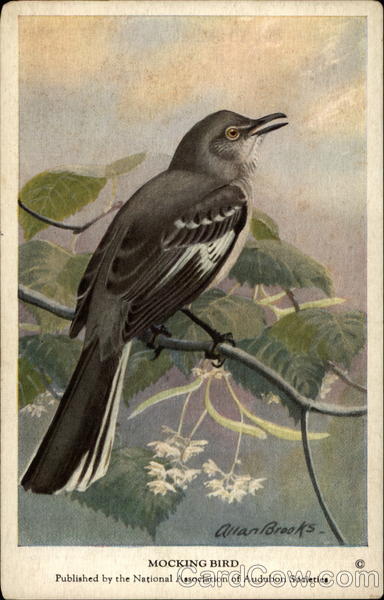Front:
aranBrooks.
MOCKING BIRD
Published by the National Association of Audubon Societies
Back:
No. 50 Mockingbird
Length 1072 inches
This famous and versatile vocalist occupies
much the same position in North America that
the Nightingale does in Europe. Among all our
songsters the Mockingbird takes first rank. Al-
though chiefly inhabiting the more southerly por-
tions of the United States_his reputation has ex-
tended far beyond the limits og his range, and he
has taken a warm place in the affections of all our
people.
The Mockingbird has, with singular success,
adapted his life to the ways of civilization, and he
now courts the society of man on all occasions.
The orange groves and plantations of the South
ring with his music, and many a moonlit night is
filled with ecstatic song - In many instances he
has left his native Southland and taken up his
abode in more northerly_states. He possesses a
rare degree of hardihood, and repeatedly has been
known to brave a northern winter.
The nest is placed in-d variety of situations-
small trees, bushes, brush heaps, grape-arbors,
vines, etc. It is of weed-stalks, small twigs,
grasses, and strips of bark Generally four to six
eggs are laid. These are pale greenish-blue, spotted
heavily at the larger end with brown.
Classification: Order Passeres. Family Mimida.
Scientific name: Mimus polyglottos.
Range: The whole of the United States as far north
as Maryland, southern Indiana and southern Iowa and
central California.
No. 50 from set of 50 Winter Birds of the Northeastern United
States. Published by the National Association of Audubon So-
cieties, 1974 Broadway, New York City. Price per set, in a box,
$1.00 post paid.



